We decided to spend our ‘summer holiday’ away from the snowcapped mountains & elevations above 4000m in desperate need for sun and warmth.
Where to do this better than in the Caribbean? Cuba it was!
- We wanted to visit this place but on a later time in the trip, but the plane tickets were equally expensive from Peru as from Colombia.
- We had our friends, Jon & Sara, who were at that time spending their holiday in Cuba and it was the perfect opportunity to meet up and spend some days together.
- We wanted a change from travelling and living from the car for a while.
- We didn’t have a real plan/route after the family visit in Peru, so everything was possible.
Next to all the other reasons we had, such as being in the land of rum and its derivatives Mojito and Cuba Libre! Its music played by numerous bands in the streets and bars! Its Colonial houses and Old-timers roaming the streets! Its cultural mixture of European, African and Caribbean influences! Its salsa and rumba, its cigars, its white-sand beaches and green-blue ocean, …
How many reasons does a person need to visit a country? The above was more than enough to go for it!
WHY is it “El pais de la mezcla” (the land of mixtures) for us?
- Was it a ’58 or a ’59 Ford Fairlane?
The most beautiful aspect of Cuba is undoubtedly the fact time stood still as soon the Americans ‘left’ Cuba in the early sixties. It’s like travelling back in time when you see the classic cars driving through the streets. The current car park clearly represents the struggle back then between the USA & the USSR: About half of the car park are the big American classics with lots of chrome, while the other half are the functional, small and cubed Russian LADAs. Engaged in a fierce competition to push out the most CO2 into the atmosphere and they both do a good job!
And as if Cuba is a real life test case for geopolitics, the Chinese now push their Geely’s and other brands on the Cuban market. Cuba: a representation of the ongoing battle for world domination on the Caribbean island.
For us it was very nice to see the old cars driving between the impressive colonial buildings of Havana, passing numerous horse carts carrying fresh fruits and here and there groups of elderly people playing a domino game. A view very rare in this world.
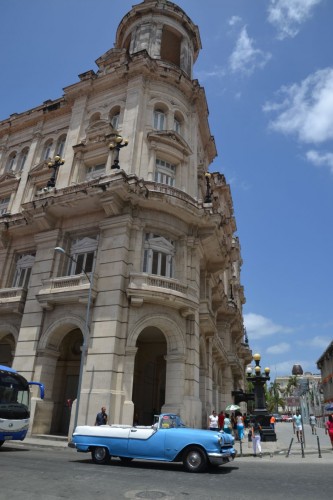
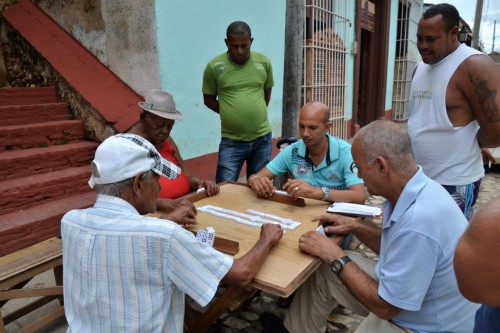
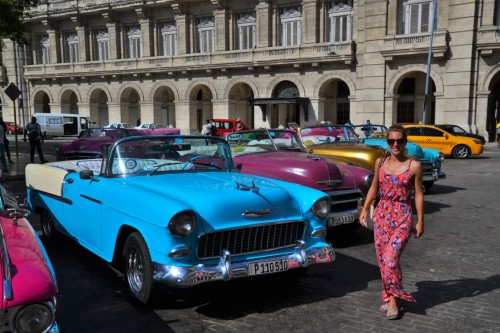
- Cocteles! A mix of “Rum and Coca Cola”
Not actually Coca Cola but the Cuban Tucola, since there are not too much American products to be found on the island. Anyway, the notorious Cuba Libre (one of my favorite cocktails) and mojitos are omnipresent! Cuba is world famous for its Havana Club rum and it is cheaper here than anywhere on the planet (=1 to 3 dollar for a mojito).
Needless to say we increased our drinking volumes in Cuba with 300% compared to other destinations. The last evening together with Jon & Sara was clearly an outlier which boosted these numbers no doubt.
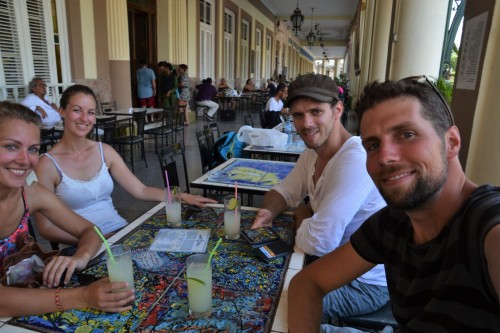
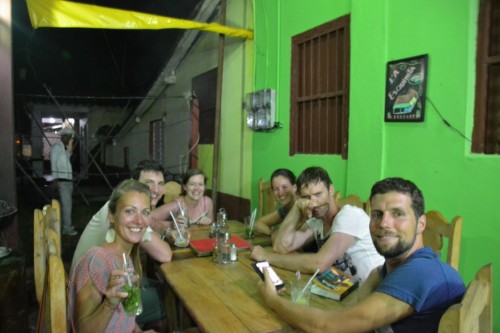
- Cubans: A challenge for the human genome project
Due to the arrival of the Spanish colonialists, the import of African slaves, and all this mixed with the indigenous population, you can find in Cuba whatever color a human can possible have. With a broad range between black and white skin, all possible hairstyles, black, green or blue eyes, it is impossible to tell which person is considered more “Cuban” than another. We are all Cuban!
It’s a colorful mix of people and culture. Nevertheless, it seems very easy for them to tell we were tourists based on the number of Jineteros that started to speak to us and don’t address their fellow Cubans.
Did you know?
‘Jineteros’ are an overpopulated breed in Cuba, which sole function is to sell whatever they can to tourists. They are strategically placed at bus stations, busy restaurants and tour agencies and easily recognizable to their continuously shout-outs: “TAXI SIR?”, “YOU NEED CASA?”, “WANT CIGAR?”, “INTERNET?” … Even one time someone tried to sell “YOU WANT PLAYA?”!
Sadly but true, 9 out of 10 times when a Cuban starts a conversation out of the blue, it ends up with trying to sell a seat in a car or to recommend a good restaurant belonging to one of ‘their friends’. They work on commission so their motto is clearly “the more you yell, the more you sell”.
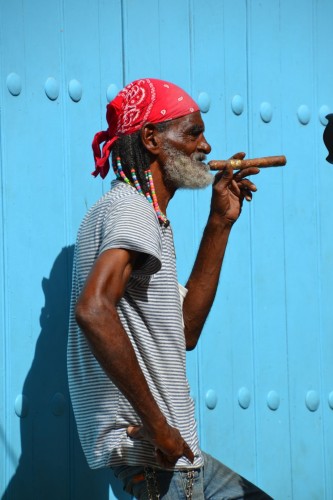
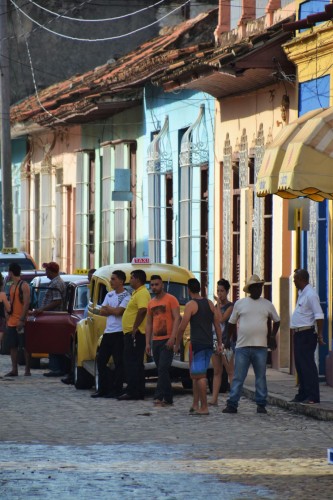
- Mezcla of hustling & tricks
Many Cubans are Hustler Kings and try to make (more) money in every way possible. A range of ‘legit’ to ‘less legit’ ways: from selling cigars on the street, over incorrect bills or change to Jineteros selling seats on a truck for 4 times the regular price. Some examples:- About 10 times we received an incorrect bill: they don’t write down the individual prices of drinks and dishes but only an overall total on the bill. Sometimes you remember the prices and notice it is far off than what the menu said.
- About 8 times incorrect change or didn’t even bother to bring the change.
- A Jinetero tried to sell us seats on a truck for 40 dollar per person while it was only 15 when we went straight to the truck driver to ask for the price. When we were on the truck we saw a Jinetero drop off a family of 4 tourists who paid 120 dollar in total to the Jinetero and he probably paid the driver the correct price of 8 per person (they had to go half way).
- Agreement on a price for a taxi the day before, the next day the taxi driver (which is another person) says it is impossible for the agreed price and the price is higher.
- A guy at the office to change money spirited away 50 Euros during counting like it was a magic trick and “suddenly found it again” when we said something was incorrect in counting the bills.
- Often buying something at a store one day and then buying the same at the same store the day after and the price was different.
- To drop of your luggage for a bus at one bus station they had a sign/paper it costed 1 dollar/CUC – which everybody paid – while we later found out at another bus station that it was not obligatory and was actually a tip they wanted.
- In several places when paying in one currency, they converted it with a rate that suited them better. At times 1 CUC was worth 23 moneda nacional for them, sometimes only 20.
- And so on …
Moral of this part: just watch out a little, you can travel longer with your money.
- They mix two currencies: Moneda nacional (CUP) and Pesos Convertibles (CUC) Cuba is one of the few (or only?) countries in the world with a double currency -and thus economy-: 25 CUP = 1 CUC. It’s difficult to grasp but simply said, the CUP is for locals and the CUC is for tourists. People earn a monthly income of about 25 to 30 CUC a month and because of ‘socialism’ this is the same for doctors and lawyers as for construction workers.
On the other hand, foreigners pay prices equally or higher than in their home country for everything they eat or do. Go figure?
Examples:- Tourists are not allowed (or strongly discouraged) on local buses and have to take the tourist bus. The local bus between Santiago de Cuba and Havana costs 6,75 CUC (169 CUP) while the tourist bus costs 51 CUC for the same route. A taxi for this distance would between 180 and 250 CUC. Even more striking are short distances: the local bus from Havana to the beach costs 2 peso two way while the tourist bus costs 5 CUC: 62,5 times as expensive!
By now, we are very familiar with tourist pricing all over the world but this really beats everything. - Restaurants offer food ranging from 5 to 15 CUC for a dish, while ‘peso food’ restaurants offer similar dishes for 1 to 3 CUC (20 to 60 CUP).
- Going to the toilet states “1$” and giving 1 CUP coin is what they expect, but they won’t bother to give change if you give 1 CUC as a tourist. You should explicitly ask for change if you don’t have moneda nacional on you.
- Tourists are not allowed (or strongly discouraged) on local buses and have to take the tourist bus. The local bus between Santiago de Cuba and Havana costs 6,75 CUC (169 CUP) while the tourist bus costs 51 CUC for the same route. A taxi for this distance would between 180 and 250 CUC. Even more striking are short distances: the local bus from Havana to the beach costs 2 peso two way while the tourist bus costs 5 CUC: 62,5 times as expensive!
This double economy is the root cause of many ‘problems’ (to come) in Cuba:
People working in tourism, having a taxi, a restaurant or a casa particular (=B&B), make much more money than the other people who work for the government, farm or teach at a school. With a casa particular the rate for 1 night is 25 to 35 CUC – minus 10% they have to pay as taxes and a fix fee per month of 50 CUC per room – they can make 1 month salary with renting out 3 nights per month. That is the reason that almost all houses in very touristic places are casas particulares and everybody with a car runs a taxi service. It makes you wonder how employers still find people to work for them if there is another way to make easier money. We explicitly heard this from the guy who also rented out one room that, before it was allowed in that region to start a casa particular, he worked at a bar in a hotel. Now they live – the whole family – from renting out 1 room in their house and except from changing sheets and clean a bit, just hang around and don’t work. Why would you?
It makes a small part of the population quite wealthy while the others stay very poor. It stimulates people to go for the big money in tourism while their education – which the government paid for – is flushed down the drain.
It makes some people a bit “lazy”. The whole family, including mature children, who live of the casa particular, fill their days with hanging around and going to the beach.
Did you know?
As an example: Renting out a casa particular with 2 rooms, for 25 CUC per room per night and suppose they can only rent it out 4 months a year during high season (120 nights), they would make about 5000 CUC a year after taxes. If they can rent it out even more – let’s say 180 nights – they make over 7500 CUC a year. This is a big difference with a doctor and a lawyer who make only about 350 CUC a year! We saw many “mechanical engineer”, “lawyer” and other higher education diplomas hanging in the casas particulares we stayed at. If this distortion doesn’t kill your economy I don’t know what does.
Note: The taxes casa owners and taxi drivers have to pay -10%- is a big discrepancy with the 90% the tobacco farmers have to sell obligatory to the government at a price the government sets.
So as you can see we sometimes had mixed feelings about Cuba. But don’t get us wrong, we DO understand the people who try to live from tourism (the inequality is the government’s fault) and apart from some frustrations, we DID had a really nice & relaxing time in Cuba.
We also must admit that we still don’t get the Cuban system completely and would like to see the country outside the touristy places (which would be easier with a rental car). With public transportation, we made a big loop on the island and alternated between the cities and beaches. You can find the route below!
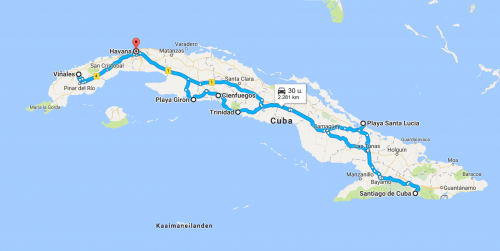
Some highlights:
- Colonial houses & classic cars in Havana and Trinidad
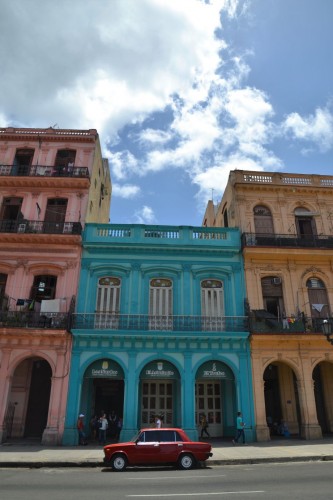
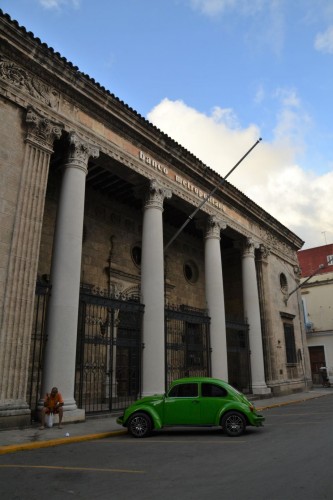
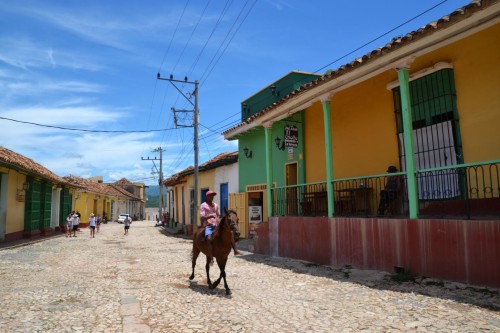
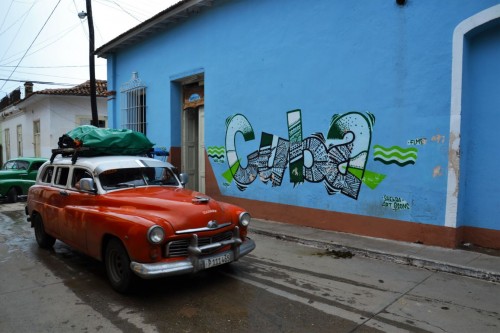
- Horseback riding in Viñales
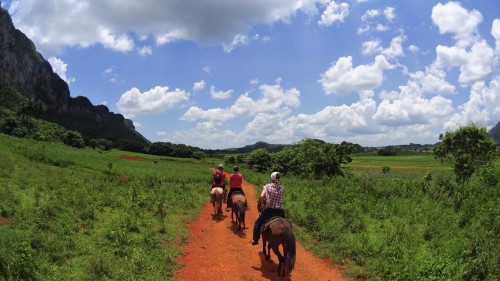
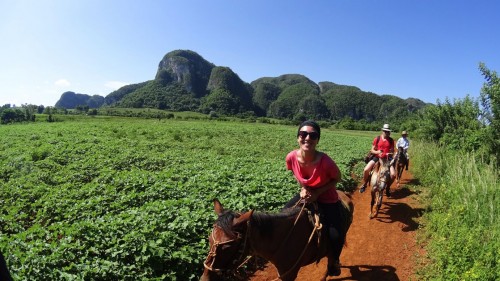
- Driving a bike & snorkeling around Playa Giron
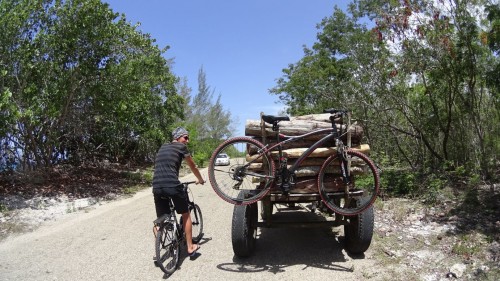
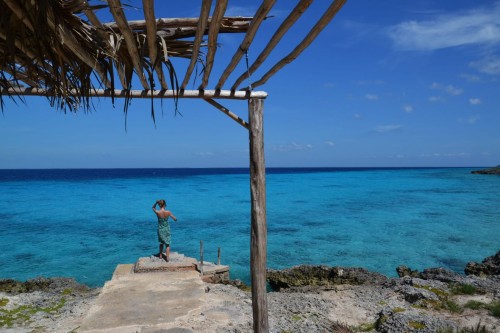
- Beautiful Playa Coco close to Playa Santa Lucia
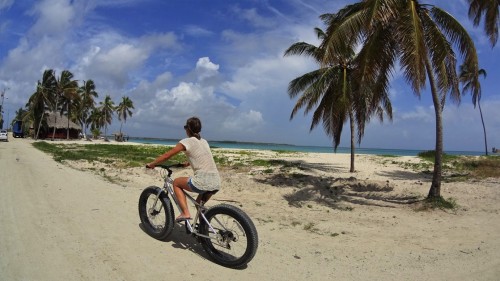
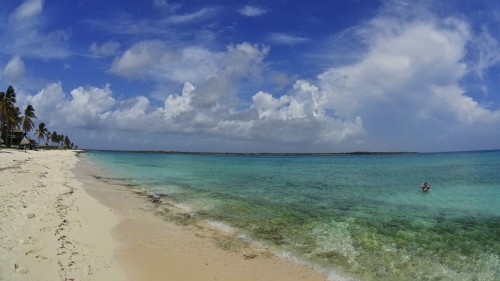
- Taking salsa classes, first a couple of hours in Trinidad, but when we showed what we could do to our salsa teacher in Santiago de Cuba, she said “Horrible” and we had to start all over again 😉 Let’s say we are no naturals, but we liked it and had fun 🙂
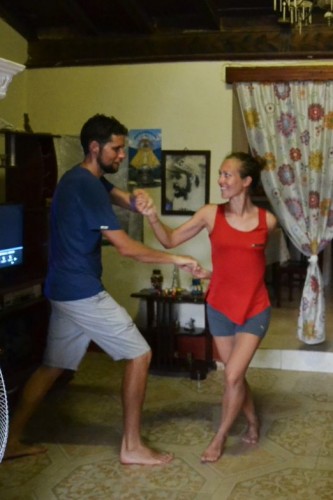
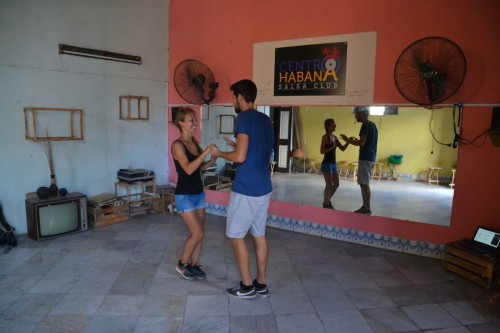
- The most expensive hotel of our entire trip 🙂 . Ok, this was not actually a highlight, as it was not a splurge and definitely not worth the money, but just that we didn’t have any other options. But hey, we did have a pool!

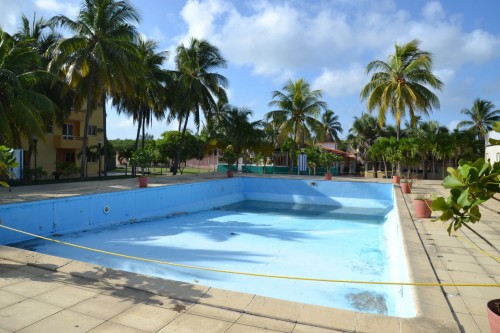
- Cheap lobster
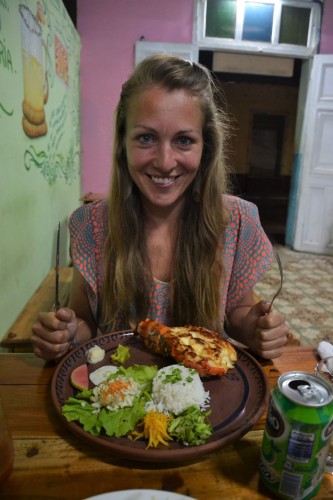
- Carnaval week in Santiago de Cuba
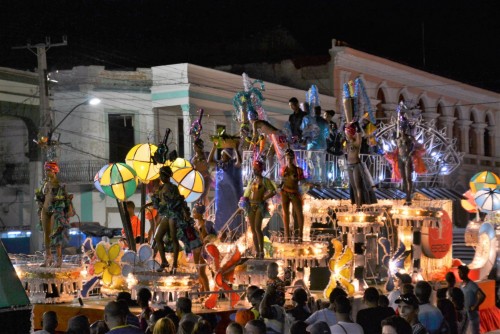
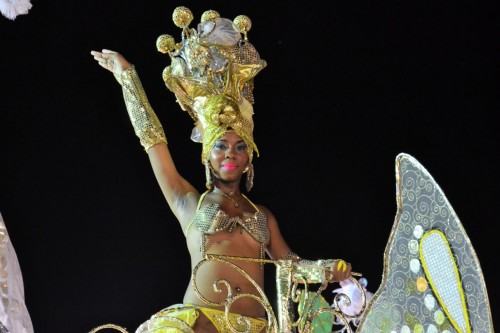
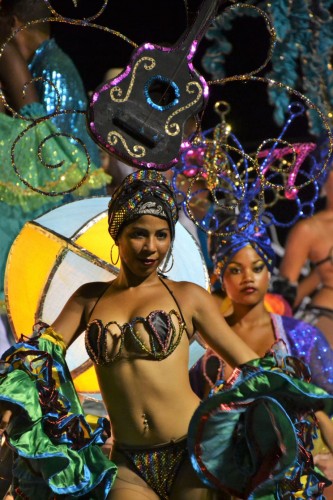
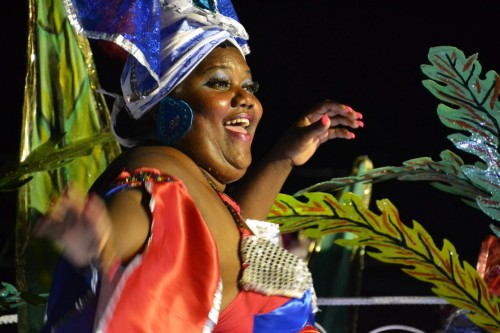
Join our nicest moments in this video:

Geweldige cocktails waren het! 🙂
Hahaha, zeg dat wel 🙂 Tof nog eens iets van jullie te horen, hopelijk goed rondgereisd verder in Cuba? Lijkt al weer zo lang geleden zeg!